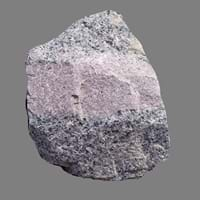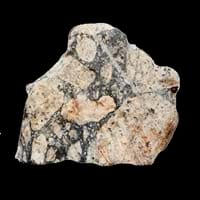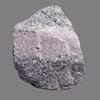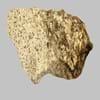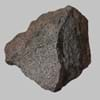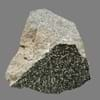Definition
Aplite is a fine-grained granite composed mainly of feldspar and quartz
Breccia is a rock consisting of angular fragments of stones which are cemented by finer calcareous material
Discoverer
Unknown
Unknown
Etymology
From German Aplit, from Greek haploos simple + -ite
From Italian, literally gravel, Germanic origin and related to break
Class
Igneous Rocks
Sedimentary Rocks
Sub-Class
Durable Rock, Hard Rock
Durable Rock, Hard Rock
Group
Plutonic
Not Applicable
Other Categories
Fine Grained Rock, Opaque Rock
Coarse Grained Rock, Medium Grained Rock, Opaque Rock
Texture
Granular, Graphic
Brecciated, Clastic
Color
Black, Grey, Orange, Pink, White
Beige, Black, Blue, Brown, Buff, Green, Grey, Orange, Pink, Purple, Red, Rust, White, Yellow
Durability
Durable
Durable
Scratch Resistant
Yes
Yes
Appearance
Veined or Pebbled
Layered, Banded, Veined and Shiny
Interior Uses
Bathrooms, Countertops, Decorative Aggregates, Entryways, Floor Tiles, Homes, Hotels, Kitchens, Stair Treads
Countertops, Decorative Aggregates, Entryways, Floor Tiles, Flooring, Homes, Hotels, Interior Decoration
Exterior Uses
As Building Stone, As Facing Stone, Bridges, Paving Stone, Near Swimming Pools, Office Buildings, Resorts
As Building Stone, As Facing Stone, Paving Stone, Garden Decoration, Office Buildings
Other Architectural Uses
Curbing
Curbing
Construction Industry
As Dimension Stone
As Dimension Stone, Construction Aggregate, Landscaping, Roadstone
Medical Industry
Not Yet Used
Not Yet Used
Antiquity Uses
Artifacts, Monuments, Sculpture, Small Figurines
Artifacts, Sculpture
Commercial Uses
Curling, Gemstone, Laboratory bench tops, Small Sculptures, Tombstones
Creating Artwork, Gemstone, Jewelry
Types
Not Available
Collapse Breccia, Fault Breccia, Flow Breccia, Pyroclastic Breccia, Igneous Breccia and Impact Breccia
Features
Available in lots of colors, Available in Lots of Colors and Patterns, Is one of the oldest rock
Available in Lots of Colors and Patterns, Clasts are smooth to touch
Archaeological Significance
Monuments
Used
Not Yet Used
Famous Monuments
Data Not Available
Not Applicable
Famous Sculptures
Data Not Available
Data Not Available
Pictographs
Not Used
Not Used
Petroglyphs
Not Used
Not Used
Formation
Aplites belong to intrusive igneous rocks which are mostly quart and alkali feldspar and are formed from residual eutectic granitic liquids and represent the final crystallization products of magma.
Breccia is a clastic sedimentary rock which is composed of broken fragments of minerals or rock which are cemented together by a fine-grained matrix and it forms where broken, angular fragments of rock or mineral debris accumulate.
Mineral Content
Amphibole, Biotite, Feldspar, Hornblade, Micas, Muscovite or Illite, Plagioclase, Pyroxene, Quartz
Calcite, Clay, Feldspar, Phosphates, Quartz, Silica
Compound Content
Aluminium Oxide, CaO, Iron(III) Oxide, FeO, Potassium Oxide, MgO, MnO, Sodium Oxide, Phosphorus Pentoxide, Silicon Dioxide, Titanium Dioxide
Aluminium Oxide, Ca, NaCl, CaO, Iron(III) Oxide, Potassium Oxide, Sodium Oxide, Silicon Dioxide, Titanium Dioxide
Types of Metamorphism
Burial Metamorphism, Cataclastic Metamorphism, Hydrothermal Metamorphism, Regional Metamorphism
Burial Metamorphism, Cataclastic Metamorphism
Types of Weathering
Chemical Weathering, Mechanical Weathering
Biological Weathering, Chemical Weathering, Mechanical Weathering
Types of Erosion
Chemical Erosion, Coastal Erosion, Wind Erosion
Chemical Erosion
Grain Size
Very fine-grained
Medium to Coarse Grained
Fracture
Not Available
Uneven
Porosity
Less Porous
Less Porous
Luster
Dull to Pearly to Subvitreous
Dull to Pearly
Compressive Strength
Not Available
Cleavage
Not Available
Non-Existent
Toughness
Not Available
Not Available
Specific Gravity
2.6
2.86-2.87
Transparency
Opaque
Opaque
Density
2.6 g/cm3
0 g/cm3
Specific Heat Capacity
Not Available
Resistance
Heat Resistant, Wear Resistant
Heat Resistant, Impact Resistant, Pressure Resistant, Wear Resistant
Deposits in Eastern Continents
Asia
China, India, Iran, Saudi Arabia, Sri Lanka, Taiwan, Thailand, Turkey, Vietnam
China, India, Kazakhstan, Mongolia, Russia, South Korea, Uzbekistan
Africa
Angola, Egypt, Madagascar, Namibia, Nigeria, South Africa
Namibia, Nigeria, South Africa
Europe
Austria, Belgium, Finland, France, Germany, Italy, Norway, Sardinia, Spain, Switzerland, The Czech Republic, Venezuela
Austria, Denmark, Germany, Great Britain, Netherlands, Norway, Poland, Sweden, Switzerland, United Kingdom
Others
Not Yet Found
Greenland
Deposits in Western Continents
North America
Canada, USA
Barbados, Canada, Mexico, Panama, USA
South America
Not Yet Found
Brazil
Deposits in Oceania Continent
Australia
Not Yet Found
New South Wales, New Zealand
Aplite vs Breccia Characteristics
Though some rocks look identical, they have certain characteristics which distinguish them from others. Characteristics of rocks include texture, appearance, color, fracture, streak, hardness etc. Aplite vs Breccia characteristics assist us to distinguish and recognize rocks. Also you can check about Properties of Aplite and Properties of Breccia. Learn more about Aplite vs Breccia in the next section. The interior uses of Aplite include Bathrooms, Countertops, Decorative aggregates, Entryways, Floor tiles, Homes, Hotels, Kitchens and Stair treads whereas the interior uses of Breccia include Countertops, Decorative aggregates, Entryways, Floor tiles, Flooring, Homes, Hotels and Interior decoration. Due to some exceptional properties of Aplite and Breccia, they have various applications in construction industry. The uses of Aplite in construction industry include As dimension stone and that of Breccia include As dimension stone, Construction aggregate, Landscaping, Roadstone.
More about Aplite and Breccia
Here you can know more about Aplite and Breccia. The life cycle of a rock consists of formation of rock, composition of rock and transformation of rock. The composition of Aplite and Breccia consists of mineral content and compound content. The mineral content of Aplite includes Amphibole, Biotite, Feldspar, Hornblade, Micas, Muscovite or Illite, Plagioclase, Pyroxene, Quartz and mineral content of Breccia includes Calcite, Clay, Feldspar, Phosphates, Quartz, Silica. You can also check out the list of all Igneous Rocks. When we have to compare Aplite vs Breccia, the texture, color and appearance plays an important role in determining the type of rock. Aplite is available in black, grey, orange, pink, white colors whereas, Breccia is available in beige, black, blue, brown, buff, green, grey, orange, pink, purple, red, rust, white, yellow colors. Appearance of Aplite is Veined or Pebbled and that of Breccia is Layered, Banded, Veined and Shiny. Properties of rock is another aspect for Aplite vs Breccia. The hardness of Aplite is 6.5 and that of Breccia is 7. The types of Aplite are Not Available whereas types of Breccia are Collapse Breccia, Fault Breccia, Flow Breccia, Pyroclastic Breccia, Igneous Breccia and Impact Breccia. Streak of rock is the color of powder produced when it is dragged across an unweathered surface. The streak of Aplite and Breccia is white. The specific heat capacity of Aplite is 0.79 kJ/Kg K and that of Breccia is Not Available. Depending on the properties like hardness, toughness, specific heat capacity, porosity etc., rocks are resistant to heat, wear, impact, etc.Aplite is heat resistant, wear resistant whereas Breccia is heat resistant, impact resistant, pressure resistant, wear resistant.
